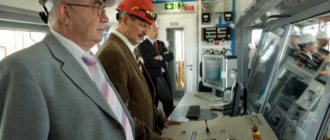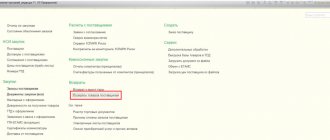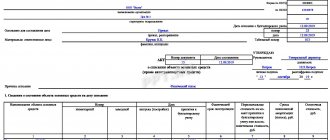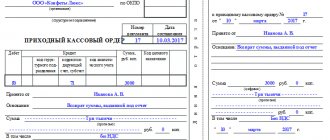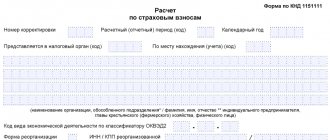We will look at what work in progress consists of and how to reflect in 1C 8.3, how accounting for work in progress in 1C is organized and how the inventory of work in progress occurs. An example for us will be the 1C:ERP system, which implements the latest developments of the 1C company in terms of production accounting.
NP in 1C:ERP can consist of:
- Materials sent to production but not yet processed;
- Finished goods/semi-finished products produced but not transferred to the finished goods warehouse;
- Direct costs (for example, wages of employees, depreciation, rental of industrial equipment, etc.) not included in the cost of manufactured products;
- Other costs not included in the cost of production.
Let us note as a conclusion that NP costs are divided into two types:
- Nomenclature costs (materials/semi-finished products);
- Itemized expenses.
What is work in progress?
Work in progress (WIP) is the cost of costs directed to production (general and general production expenses) and other expenses for the production of products, the production of which has already begun, but has not yet been completed at the reporting date (month, quarter, year).
WIP accounting is maintained on production account 20, and can also be maintained on accounts 23, 29 (service production). When closing the reporting period, the resulting debit balances of these accounts indicate work in progress in the organization.
When closing the month (summarizing accounting results), these costs are not written off to other accounts, even if there was no production in the reporting period. In the future, they will be included in the cost of finished products. Until the finished product (service) is sold, the costs will be accounted for as work in progress.
The release of finished products, according to the accounting policy, during the month (production cycle) is estimated at the planned cost. At the end of the month, when closing accounts, the actual cost is calculated when the entire technological process for the production of products or services is completed.
Accounting consequences of writing off work in progress
We prepare documents
For various reasons, the company may change its plans, and it will have to liquidate the unfinished fixed asset. Moreover, this object can be written off only if there are documents confirming the very fact of its liquidation.
If construction as such has not yet begun, but, for example, money has already been spent on design work, then these capital investments are also considered unfinished. After all, such costs participate in the formation of the initial cost of the object and cannot be written off as expenses in the period in which they were incurred. 7, 8, 17 PBU 6/01.
The liquidation of unfinished work begins with management making an appropriate decision, for which an order is issued. The order needs:
- indicate the reason for making such a decision;
- appoint a commission to prepare documentation and determine suitable materials remaining after liquidation; Resolution 1 of the AAS dated November 26, 2015 No. A11-813/2015.
Upon completion of all liquidation work (including dismantling/dismantling), the commission draws up an act on the write-off of the unfinished construction project. The act is drawn up in any form, taking into account the requirements for primary documents. 9 of the Law of December 6, 2011 No. 402-FZ. In this case, its form must be approved by order of the manager. The act can be drawn up, for example, like this.
APPROVED General Director of VSK-Profit LLC
| I.S. Semenov |
Act on write-off of unfinished construction object No. 1
Moscow
October 31, 2021
In accordance with Order No. 68 dated July 29, 2021, the liquidation of the unfinished construction facility “Industrial Building No. 3” was carried out:
| Types and stages of work that form the cost of an unfinished construction project | Method of work execution | Cost of work performed as of the date of liquidation according to accounting data, excluding VAT, rub. | VAT on contract work, rub. | Date of acceptance for accounting of completed work | When carrying out construction work by contract method | |
| Agreement | Contractor information | |||||
| Design and survey work | Contracting | 560 000,00 | 100 800,00 | 14.05.2015 | No. 106-15 dated 02/16/2015 | LLC "Proektservis" |
| Foundation structure | Contracting | 2 680 000,00 | 482 400,00 | 05.10.2015 | No. 18 from 06/05/2015 | LLC "Stroykomplekt" |
| Assembly of metal structures | Contracting | 1 110 000,00 | 199 800,00 | 23.10.2015 | No. 18 from 06/05/2015 | LLC "Stroykomplekt" |
| Total: | 4 350 000,00 | 783 000,00 | ||||
Information on costs associated with the liquidation of an unfinished construction project:
| Type of work | Document, number, date | Cost without VAT, rub. | VAT, rub. |
| Dismantling of metal structures | Certificate of completed work of Stroykomplekt LLC No. 15 dated 08/30/2016 | 78 000,00 | 14 040,00 |
| Analysis of the foundation, backfilling the pit | Certificate of completed work of Stroykomplekt LLC No. 44 dated 10/28/2016 | 120 000,00 | 21 600,00 |
| Total: | 198 000,00 | 35 640,00 | |
Information on the receipt of material assets from the liquidation of an unfinished construction project subject to capitalization:
| Name | Unit | Quantity | Cost without VAT, rub. | |
| units | Total | |||
| Scrap metal | Kg | 2300 | 28,00 | 64 400,00 |
| Total: | 64 400,00 | |||
The date of writing off the construction-in-progress object from accounting is 10/31/2016.
Chairman of the commission:
| Chief Engineer | A.Yu. Podgorny |
Members of the commission:
| Chief Accountant | S.G. Lozhkina |
| accountant | N.S. Kovaleva |
Reflected in accounting
Make the following entries in accounting:
| Dt | CT | Amount, rub. | |
| As of the date of the work completion certificate | |||
| The costs of dismantling metal structures were written off | 91-2 “Other expenses” | 60 “Settlements with suppliers and contractors” | 78 000,00 |
| VAT on dismantling work is included | 19 “VAT on purchased assets” | 60 “Settlements with suppliers and contractors” | 14 040,00 |
| The costs of dismantling the foundation were written off | 91-2 “Other expenses” | 60 “Settlements with suppliers and contractors” | 120 000,00 |
| VAT on dismantling the foundation is taken into account | 19 “VAT on purchased assets” | 60 “Settlements with suppliers and contractors” | 21 600,00 |
| VAT claimed by the contractor is recognized as another expense | 91-2 “Other expenses” | 19 “VAT on purchased assets” | 35 640,00 |
| As of the date of write-off of the unfinished construction project according to the act | |||
| The cost of an unfinished construction project has been written off | 91-2 “Other expenses” | 08 “Investments in non-current assets” | 4 350 000,00 |
| Scrap metal accepted for registration | 10 “Materials”, subaccount “Other materials” | 91-1 “Other income” | 64 400,00 |
| Materials received upon disposal of property are accounted for at the current market value on the date of their acceptance for accounting. 9 PBU 5/01. Current market value refers to the amount that can be received when selling an asset. In this case, data on the current price must be documented. 23 Regulations, approved. By Order of the Ministry of Finance dated July 29, 1998 No. 34n. To do this, you can use prices from the price lists of organizations involved in collecting scrap metal. | |||
CONCLUSION
The cost of work in progress is recognized as part of other expenses on the date of drawing up the act of writing off this object after completion of all work.
How to reflect work in progress in 1C 8.3
In the 1C 8.3 program, select the Accounting parameters section:
Next, it is necessary to indicate on the Production tab that accounting for finished products during the month will be carried out at planned prices:
Using the More button, you can find out how to fill out bookmarks correctly in the Help section:
The main documents on production operations in 1C 8.3 are located in the Production section:
Open this section and select in it those subsections that are necessary to perform certain operations for accounting:
Product release design options
In 1C, product release can be reflected in two ways:
- with the write-off of materials according to the specification: production of products and accounting for the costs of its production are carried out simultaneously when posting the document Production Report for the shift .
- production of products and accounting for the costs of their production are carried out simultaneously when posting the document Production report for the shift ;
Inventory of work in progress
The WIP Inventory report includes the balances of work in progress at the end of the month, which are not automatically calculated in the 1C 8.3 program.
For these purposes, the 1C 8.3 program provides for the entry of operations “manually” in the context of each item group. In this case, the amounts that we enter manually must first be calculated, then compiled into a table and the WIP result displayed. Then you can enter them into the 1C 8.3 database. For example, the calculation of the amount in work in progress (WIP) can be presented in the table:
Click the Create button to open the accounting document:
Using the Add button from the Nomenclature directory, select the type Curtains and enter the calculated amount of work in progress:
Comparison of calculation methods
Comparative costs in the income statement for February, calculated using both methods, are shown in the table.
| Cost item | First option | Second option |
| Materials | 13 407 (17 386 – 3 979) | 13 528 (15 000 – 1472) |
| Salary | 7 089 (9193 – 2104) | 7 215 (8000 – 785) |
| Payments to funds | 2 410 (3 125 – 715) | 2 453 (2720 – 267) |
| Depreciation | 2 094 (2716 – 622) | 1 804 (2000 – 196) |
In general, it is preferable to use the second option because it is simpler, although it gives a rougher estimate.
Calculation of unit cost of production in 1C 8.3
To understand how in 1C 8.3 Accounting 3.0 the accumulation of amounts on the balance of production accounts (20, 23, 29) occurs, you must first understand how they are formed. To do this, it is necessary to carry out monthly closure of accounts in the 1C 8.3 database - 20; 23; 25; 26 via the Operations tab in the main menu:
When closing accounts 20, 23, 25, 26 in 1C 8.2 (8.3), the error “Production cost division not specified” may occur. How to eliminate this error and correctly close the month, see our video tutorial:
As a result, 1C 8.3 will generate a Help-calculation sheet for product cost calculations, which reflects the balances of work in progress:
From this certificate we determine the cost per unit of manufactured products, that is, what the final cost of one product (one piece, one service) turned out to be.
We divide all accumulated expenses (costs of raw materials, wages, transportation services, all taxes, advertising costs, etc.) on production (auxiliary, service) accounts by the total output of products (services) and ultimately get the cost of one unit.
In our example, to the main production costs for May, we add the amount of the WIP balance as of May 1 and subtract the amount of the WIP balance as of May 31 - we get the actual cost of manufactured products:
- 44,462.25 +65,100.00 -4,405.25=105,157.00 rub.;
- A total of 20 curtains were produced;
- 105,157.00/20=5,257.85 rub. - calculation of the actual cost of one curtain or its production cost, that is, the 1C 8.3 program calculated how much it cost the company to produce this curtain.
Specification
You can go to the specifications of an item from its card in the directory (submenu “More”).
From the list form, you can create a new specification and specify an existing one as the main one.
Let's create a new specification and fill out its tabular part.
By default, the first specification created will automatically be set as the main one for this product. In our case, the production of one chair requires 1 board, 100 grams of nails and 800 milliliters of varnish.
How to find out the total amount of work in progress for a period
Finally, in order to find out the total amount of work in progress for the required reporting period (month, quarter, year), in the 1C 8.3 program, SALT is generated for account 20 in the Reports section:
The balance on the Dt account reflects the cost of manufactured (released) products - this is the amount of work in progress that did not have time to be transferred to the warehouse as finished products.
Our distance learning course on working in 1C: Accounting 8th edition will help you study the mechanism for determining the amount of work in progress at the end of the month in 1C 8.3 for accounting and for NU, correctly calculating the actual cost of finished products and calculating it automatically using the Month Closing procedure . 3.0, module Production of finished products. For more information about the course, watch the following video:
Give your rating to this article: (
4 ratings, average: 3.50 out of 5)
Registered users have access to more than 300 video lessons on working in 1C: Accounting 8, 1C: ZUP
Registered users have access to more than 300 video lessons on working in 1C: Accounting 8, 1C: ZUP
I am already registered
After registering, you will receive a link to the specified address to watch more than 300 video lessons on working in 1C: Accounting 8, 1C: ZUP 8 (free)
By submitting this form, you agree to the Privacy Policy and consent to the processing of personal data
Login to your account
Forgot your password?
We liquidate unfinished buildings for tax purposes
Income tax
You can take into account the costs of liquidation (dismantling, disassembly, removal of disassembled property and other similar work) in non-operating expenses sub. 8 clause 1 art. 265 Tax Code of the Russian Federation. But what about the cost of the work in progress itself (accounted for in account 08 “Investments in non-current assets”): can it be taken into account in “profitable” expenses? There are two points of view on this issue.
POSITION 1. With a minus sign. According to the Ministry of Finance, it is impossible to write off the cost of work in progress as expenses, since such costs are Letters from the Ministry of Finance dated 01.10.2012 No. 03-03-06/1/512, dated 23.11.2011 No. 03-03-06/1/772, dated 03.12.2010 No. 03-03-06/1/757:
- not directly named in subparagraph. 8 clause 1 art. 265 Tax Code of the Russian Federation;
- do not generate income, that is, they do not meet the requirements of Art. 252 of the Tax Code of the Russian Federation. This means that they cannot be recognized as other justified expenses sub. 20 clause 1 art. 265 Tax Code of the Russian Federation.
Some judges agree with such a literal reading of the norms of the Tax Code of the Russian Federation and refuse companies to recognize disputed costs Resolution 20 of the AAS dated December 24, 2015 No. A68-2772/2015; FAS NWO dated August 17, 2011 No. A56-60650/2010.
POSITION 2. With a plus sign. There are other court decisions. In them, the judges conclude that writing off the cost of work in progress as “profitable” expenses is legal. They proceed from the following Resolution of the AS UO dated June 27, 2016 No. F09-4723/16; AS ZSO dated 05/06/2016 No. A27-18073/2015; FAS MO dated 04/01/2014 No. F05-2300/2014; Determination of the VAS dated January 20, 2011 No. VAS-18063/10:
- the prohibition on writing off such costs as non-operating expenses violates the principle of equality of taxation, since in a similar situation, when decommissioning fixed assets, the organization has the right to take into account their residual value when calculating income tax. 8 clause 1 art. 265 Tax Code of the Russian Federation;
- the list of non-operating expenses is open and implies only the criterion of justification of expenses, sub. 20 clause 1 art. 265, Art. 252 of the Tax Code of the Russian Federation. That is, it is taken into account that the organization initially planned to receive income from using the facility in its production activities. And the absence of a positive financial result from attempts to build an object does not give grounds to recognize the costs of its creation as unreasonable.
Let us note that quite often the courts pay attention to the justification for the reason for writing off unfinished construction Resolutions of the AS ZSO dated 03/15/2016 No. F04-284/2016, dated 05/13/2015 No. F04-18378/2015. Therefore, if you have strong arguments in this regard, then your chances of recognizing the costs will increase.
Without a dispute with the tax authorities, it will most likely not be possible to take into account the cost of unfinished work for “profitable” purposes. However, it is worth trying to defend the accounting of such expenses in court, because the majority of judges are on the side of the companies in this matter. In this case, it is important to prove that the unfinished construction facility was originally intended to be used in the company’s production activities.
But with regard to materials obtained as a result of the liquidation of unfinished construction, the Ministry of Finance interprets the norms of the Tax Code of the Russian Federation unambiguously. According to officials, the market value of such property should be included in non-operating income on the date of signing the liquidation act. Letter of the Ministry of Finance dated April 19, 2010 No. 03-03-06/1/277.
VAT
When liquidating unfinished construction, you may have the following VAT issues.
QUESTION 1. Is it necessary to restore VAT that was previously legally accepted for deduction during the construction of a facility? The Ministry of Finance has only one answer - the tax should be restored. Letter from the Ministry of Finance dated 02/07/2008 No. 03-03-06/1/86. And all because the object will not be used in transactions subject to VAT, that is, the main condition for the deduction at the time of liquidation of the object will no longer be met. 2 tbsp. 171 Tax Code of the Russian Federation.
If you follow these recommendations, then VAT must be restored to the date of drawing up the act on writing off the work in progress.
However, the opinion of officials can be challenged in court. Moreover, the majority of courts in this matter are on the side of the companies. Resolution of the Federal Antimonopoly Service of the Moscow Region dated April 1, 2014 No. F05-2300/2014; FAS North Caucasus Region dated April 23, 2013 No. A32-7901/2012; FAS PO dated 08.08.2013 No. A65-24102/2012. The arbitrators note: in paragraph 3 of Art. 170 of the Tax Code of the Russian Federation provides a list of cases in the event of which it is necessary to restore VAT. It is closed and not subject to broad interpretation. So, the liquidation of unfinished objects is not indicated in it, which means that nothing needs to be restored.
QUESTION 2. Is it possible to deduct VAT on liquidation work? And here the Ministry of Finance is adamant. It is impossible to claim for deduction the amount of VAT submitted by contractors. Letter of the Ministry of Finance dated January 12, 2012 No. 03-07-10/01. The Federal Tax Service adheres to the same position.
FROM AUTHENTIC SOURCES
DUMINSKAYA Olga Sergeevna Advisor to the State Civil Service of the Russian Federation, 2nd class
“VAT amounts charged to the taxpayer by contractors when they liquidate (dismantle) fixed assets are subject to deductions. 6 tbsp. 171 Tax Code of the Russian Federation. Since an unfinished construction project is not a fixed asset, the amount of input VAT on liquidation work on an unfinished construction project cannot be deducted.”
Judges may meet you halfway and recognize such a deduction as legal if you prove that the liquidation work was acquired for a VAT-taxable activity. For example:
- you had not just the destruction of the object, but dismantling with the preservation of usable materials, the subsequent sale of which was the purpose of the contract work. As a result of dismantling, revenue was received from the sale of materials, subject to VAT Resolution of the Federal Antimonopoly Service of the Moscow Region dated June 20, 2014 No. F05-5803/2014;
- The purpose of dismantling work is to use the vacated land plots in your production and economic activities. At the same time, you have documentary evidence of this (for example, projects for the use of landscaped areas) Resolution of the AS ZSO dated March 15, 2016 No. F04-284/2016.
Tax authorities may require the restoration of the VAT deduction for written-off unfinished construction. However, this is not provided for by the Tax Code of the Russian Federation, which means that the likelihood of defending the deduction in court is quite high. As for VAT deductions for liquidation work, you will have to confirm the fact of acquisition of such work for VAT-taxable activities.
***
If you manage to sell the unfinished building, then you can reduce the proceeds from the sale by the amount of costs for its creation. 2 clause 1, clause 2 art. 268 Tax Code of the Russian Federation; Letter of the Federal Tax Service for Moscow dated February 28, 2005 No. 20-12/12075.1. And there should be no problems with input VAT on materials, work or services purchased for construction in such a situation. After all, the work in progress is used in transactions subject to VAT (when selling this object, VAT is charged in accordance with the general procedure, subsection 1, clause 1, article 146 of the Tax Code of the Russian Federation).
Other articles from the magazine "MAIN BOOK" on the topic "Fixed assets / real estate / capital investments":
* * *
Summarize. Tax accounting for the costs of main production is to identify them as part of direct costs. Moreover, certain expenses will require adjustments (for example, for depreciation, raw materials and supplies), since accounting rules differ from the taxation procedure. It is also possible that there are differences in the accounting and tax assessment of work in progress. A separate register for this asset is the final one in the system of registers for tax accounting of costs of main production.
Industry: accounting and taxation, No. 3, 2017
